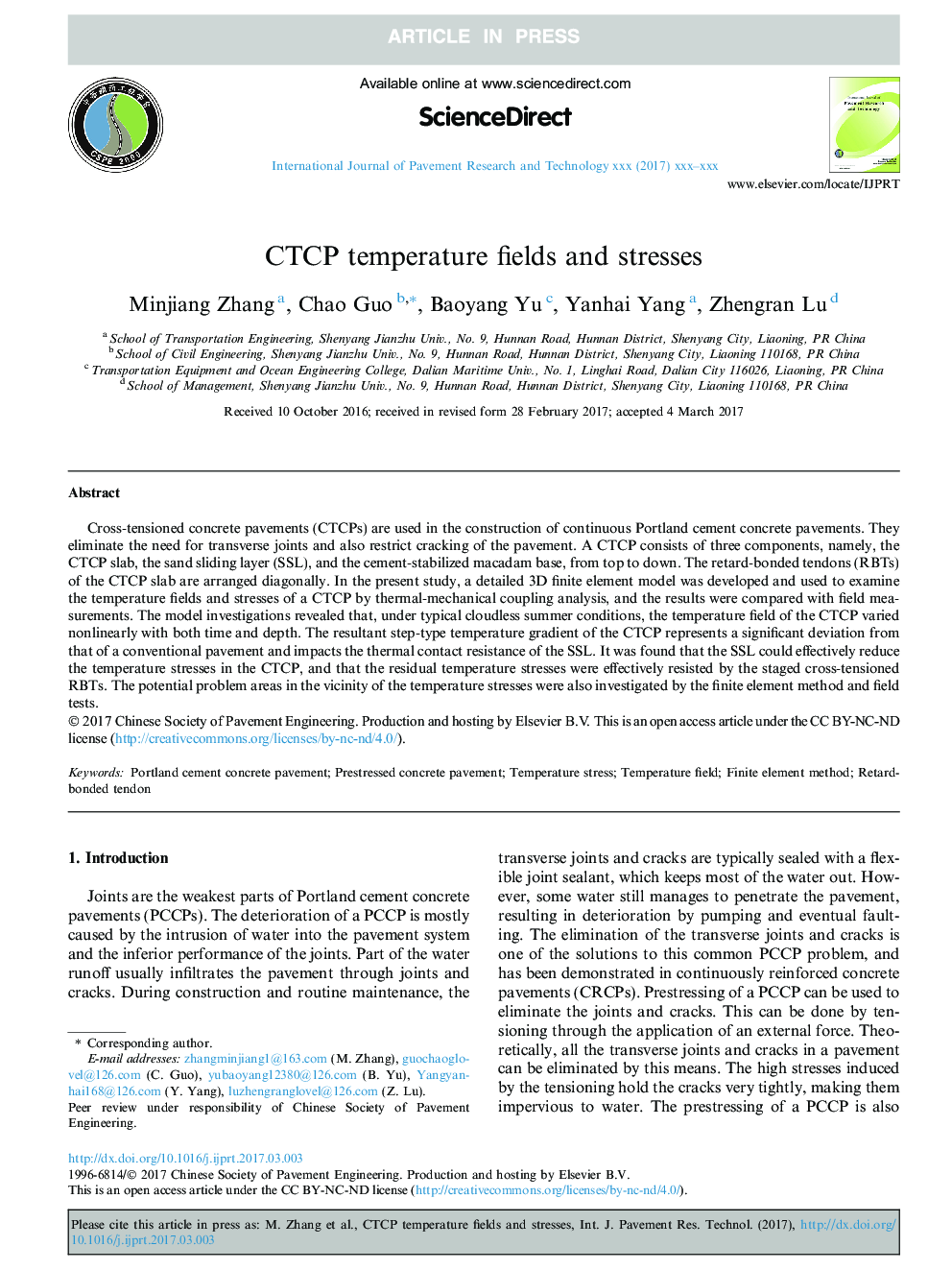| Article ID | Journal | Published Year | Pages | File Type |
|---|---|---|---|---|
| 6747988 | International Journal of Pavement Research and Technology | 2017 | 10 Pages |
Abstract
Cross-tensioned concrete pavements (CTCPs) are used in the construction of continuous Portland cement concrete pavements. They eliminate the need for transverse joints and also restrict cracking of the pavement. A CTCP consists of three components, namely, the CTCP slab, the sand sliding layer (SSL), and the cement-stabilized macadam base, from top to down. The retard-bonded tendons (RBTs) of the CTCP slab are arranged diagonally. In the present study, a detailed 3D finite element model was developed and used to examine the temperature fields and stresses of a CTCP by thermal-mechanical coupling analysis, and the results were compared with field measurements. The model investigations revealed that, under typical cloudless summer conditions, the temperature field of the CTCP varied nonlinearly with both time and depth. The resultant step-type temperature gradient of the CTCP represents a significant deviation from that of a conventional pavement and impacts the thermal contact resistance of the SSL. It was found that the SSL could effectively reduce the temperature stresses in the CTCP, and that the residual temperature stresses were effectively resisted by the staged cross-tensioned RBTs. The potential problem areas in the vicinity of the temperature stresses were also investigated by the finite element method and field tests.
Related Topics
Physical Sciences and Engineering
Engineering
Civil and Structural Engineering
Authors
Minjiang Zhang, Chao Guo, Baoyang Yu, Yanhai Yang, Zhengran Lu,
